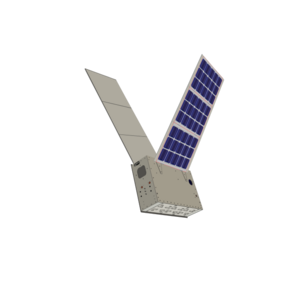 | |
| Mission type | Technology demonstration |
|---|---|
| Website | team |
| Spacecraft properties | |
| Spacecraft | Team Miles |
| Spacecraft type | CubeSat |
| Bus | 6U CubeSat |
| Manufacturer | Fluid and Reason, LLC. |
| Launch mass | 14 kg (31 lb) |
| Dimensions | 10 cm × 20 cm × 30 cm |
| Start of mission | |
| Launch date | 16 November 2022, 06:47:44 UTC [1] |
| Rocket | SLS Block 1 |
| Launch site | KSC, LC-39B |
| Contractor | NASA |
| Orbital parameters | |
| Reference system | Heliocentric orbit |
| Flyby of Moon | |
| Transponders | |
| Band | S-band |
NASA CubeQuest Challenge | |
Team Miles was a 6U CubeSat that was to demonstrate navigation in deep space using innovative plasma thrusters. It was also to test a software-defined radio operating in the S-band for communications from about 4 million kilometers from Earth. Team Miles was one of ten CubeSats launched with the Artemis 1 mission into a heliocentric orbit in cislunar space on the maiden flight of the Space Launch System (SLS), that took place on 16 November 2022. [1] [2] Team Miles was deployed but contact was not established with the spacecraft. [3]